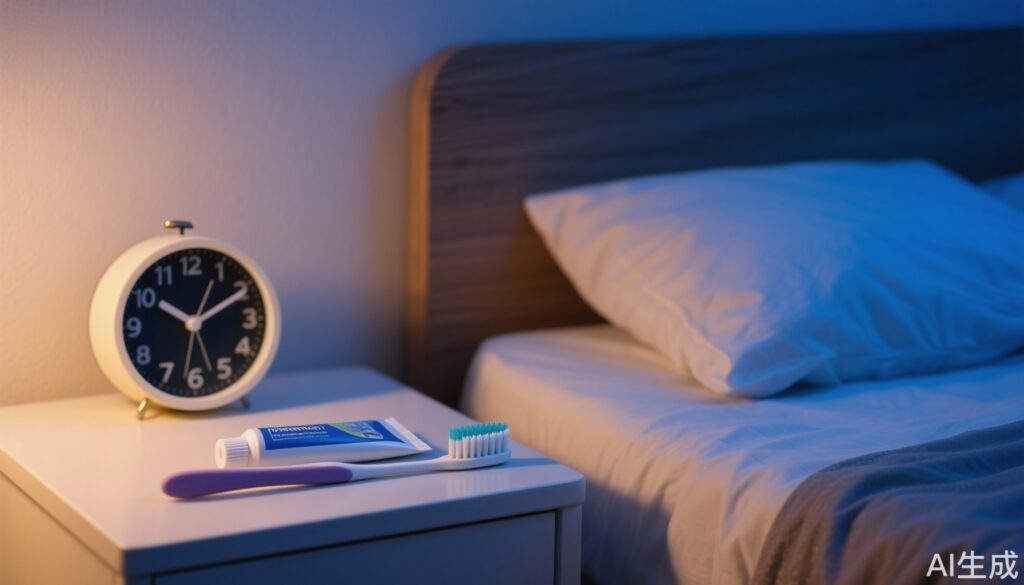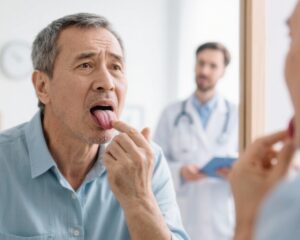Introduction
Many people struggle with maintaining a consistent oral hygiene routine. Perhaps you’ve hit the snooze button too many times in the morning, rushing out the door without brushing your teeth. Or you come home after a long, exhausting day and collapse into bed without cleaning your mouth. Both habits—skipping brushing before bedtime or skipping brushing before breakfast—are common, but which is more harmful to your dental health?
Scientific and Clinical Evidence: Why Night-time Brushing Is Crucial
According to Dr. He Jianliang, a dentist from the Comprehensive Dental Department at the Second Affiliated Hospital of Zhejiang University School of Medicine, while neither habit is recommended, failing to brush before sleep carries far greater risks than skipping morning brushing before eating.
During sleep, our eating stops, and swallowing and saliva production—which naturally help cleanse the mouth—dramatically decrease. Saliva plays a crucial role in washing away and inhibiting harmful oral bacteria. Without this natural defense, bacteria multiply rapidly in the mouth at night if plaque and food debris remain. This bacterial overgrowth can cause bad breath upon waking and a noticeable roughness or stickiness inside the teeth, a direct sign of plaque buildup.
Over time, extensive plaque accumulation increases the risk of dental caries (cavities) and can lead to irreversible gum recession.
Morning Brushing: Why Skipping It Isn’t as Harmful But Still Essential
If you brush thoroughly before bedtime, your mouth enters the night relatively clean. In the morning, while some bacteria do grow during sleep, their quantity is limited compared to overnight without brushing. Eating breakfast without brushing first may mean swallowing some bacteria with food, but most are neutralized by stomach acid, making the overall harm minimal in comparison.
That being said, relying on eating and saliva production alone to clean your teeth is ineffective. The mechanical cleaning from brushing removes plaque and bacteria far more efficiently than chewing and saliva can.
Therefore, both brushing before bedtime and brushing before breakfast remain important parts of a healthy oral care routine.
Signs Your Brushing May Be Ineffective
Dr. Bi Liangjia, Chief Dentist at the Fourth Affiliated Hospital of Harbin Medical University, highlights several warning signs that indicate improper or inadequate oral hygiene:
1. Rough or Sticky Teeth Surfaces: Plaque accumulation feels like a rough or slippery layer on the teeth when touched with the tongue, especially noticeable in the morning before brushing.
2. Persistent Bad Breath: Bacteria in plaque produce unpleasant odors.
3. Red, Swollen Gums or Bleeding During Brushing: Excess plaque irritates the gums, leading to inflammation and increased bleeding, symptoms of gingivitis or periodontitis.
4. Visible Tartar (Dental Calculus) Formation: Over time, plaque hardens into tartar, typically yellow or brown, especially near the gum line.
5. Tooth Sensitivity: Gum recession caused by ongoing plaque irritation leads to tooth root exposure, increasing sensitivity to hot, cold, or sugary stimuli.
Four Key Practices to Protect Oral Health
Maintaining healthy teeth and gums requires consistent and effective behaviors:
1. Brush at Least Twice Daily
Daily brushing twice—morning and night—is essential, with sessions lasting about 2 minutes. Avoid aggressive horizontal brushing, which can damage enamel and cause wedge-shaped defects near gum margins. Instead, hold the toothbrush at a 45-degree angle to teeth and gums and use gentle circular motions.
2. Focus on Cleaning the Inner Lower Front Teeth
Mineral deposits tend to accumulate here, and the area is often missed during routine brushing. Turn the brush vertically and gently brush upward to clear plaque and food remnants.
3. Use Dental Floss at Least Once Daily
Cavities often form between adjacent teeth, where toothbrushes cannot reach effectively. Flossing removes plaque and debris from these tight spaces. If twice-daily flossing is not feasible, at minimum floss once at night.
4. Regular Professional Dental Cleanings
Even diligent brushing and flossing may miss some plaque. Visiting a dentist for a professional cleaning once or twice per year helps remove hardened tartar and control gum inflammation.
Expert Insights
Dr. He Jianliang emphasizes that while it might seem trivial to skip brushing occasionally, the nighttime routine is the most critical. During sleep, reduced saliva lets bacteria thrive unchecked. Neglecting to brush at night creates the ideal conditions for rapid bacterial growth, significantly increasing the risk of tooth decay and gum disease.
Patient Scenario: Sarah’s Late-night Rush
Sarah, a 32-year-old marketing executive, often works late and collapses into bed without brushing because she’s too tired. She occasionally skips morning brushing when running late. Over six months, Sarah started noticing morning breath and occasional gum bleeding. Upon visiting her dentist, she learned that her skipped nighttime brushing created bacterial build-up that irritated her gums and increased decay risk.
With guidance, Sarah committed to brushing every night before bed and flossing once daily, improving her oral health noticeably.
Conclusion
Skipping brushing before bed is more harmful to oral health than skipping it before breakfast, due to the critical role of saliva and reduced mouth clearance during sleep. Recognizing signs of poor brushing and adopting effective techniques—including twice-daily brushing, flossing, focused cleaning of common problem areas, and regular dental visits—supports long-term dental health and overall wellbeing.
For a healthy smile and to avoid preventable issues, prioritize brushing before bedtime and maintain consistent oral hygiene practices.
References
1. Marsh PD. Microbial ecology of dental plaque and its significance in health and disease. Adv Dent Res. 1994 Dec;8(2):263-71.
2. He JL, et al. Comprehensive dental care and plaque control: Zhejiang University School of Medicine. J Clin Dent. 2022.
3. Bi L, et al. Clinical signs of plaque-induced gingivitis and periodontitis. Harbin Med J. 2023.
4. American Dental Association. Brushing your teeth. [https://www.ada.org/en/member-center/oral-health-topics/brushing-your-teeth]
5. Van der Weijden GA, Hioe KP. A systematic review of the effectiveness of self-performed mechanical plaque removal in adults with gingivitis using a manual toothbrush. J Clin Periodontol. 2005 Oct;32 Suppl 6:214-28.


